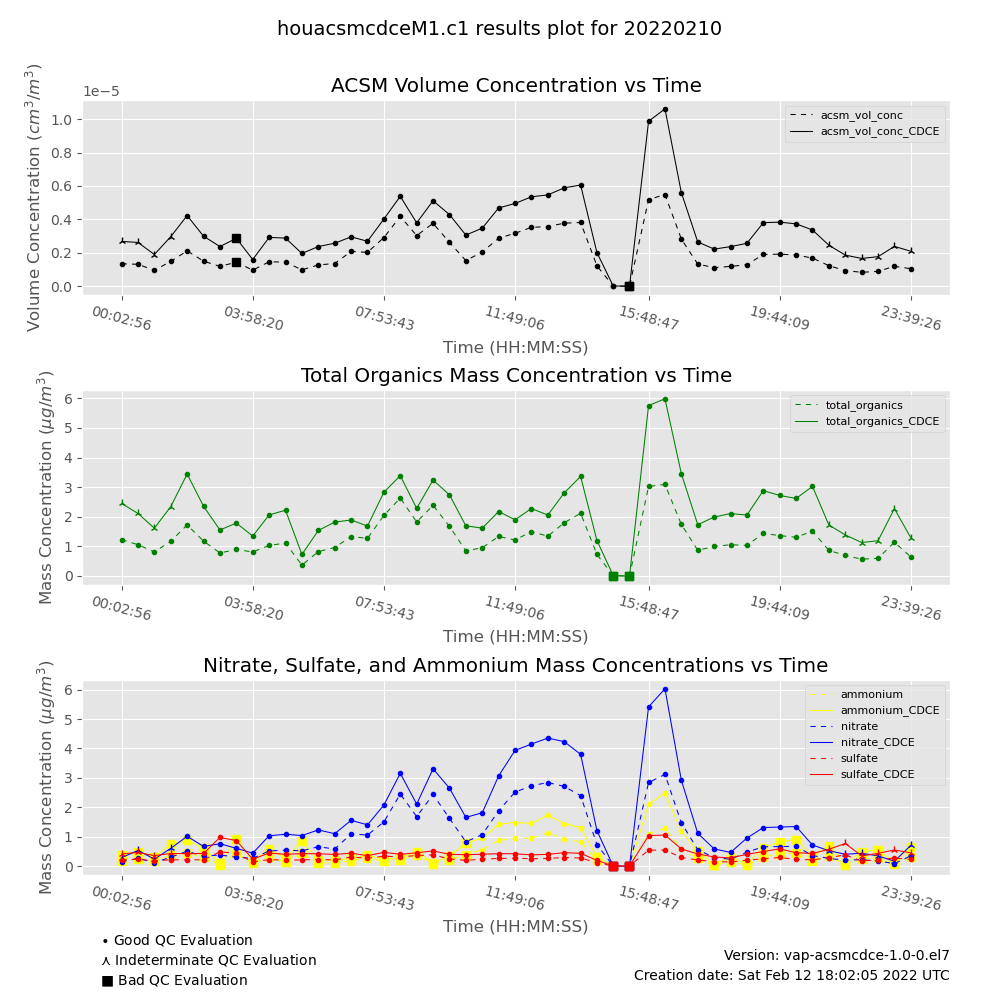Aerosol Chemical Speciation Monitor VAP Moves to Production
Published: 22 February 2022

Production data are now available from a value-added product (VAP) that corrects aerosol chemical speciation monitor (ACSM) data for non-unity particle detection. The Atmospheric Radiation Measurement (ARM) user facility previously released this VAP—referred to as ACSM, corrected for composition-dependent collection efficiency (ACSMCDCE)—as an evaluation data product.
The ACSM, installed in most ARM Aerosol Observing Systems, provides a quantitative measurement of aerosol particle chemical composition for nonrefractory aerosol components. One well-known limitation to the accuracy of the ACSM data is in evaluating the fraction of sampled aerosol particles that the instrument detects. This quantity is referred to as the collection efficiency.
Often, scientists will assume collection efficiency equals 0.5 for ambient particles collected during field campaigns. However, parameterizations have been developed that express collection efficiency as a function of the measured chemical composition, referred to as the composition-dependent collection efficiency.
The ACSMCDCE VAP applies one such parameterization, developed by Middlebrook et al. (2012), to the ACSM data. Applying this parameterization improves the accuracy of the data and brings them into better agreement with other co-located aerosol measurements.
ACSMCDCE c1-level production data are available starting from October 6, 2019, for ARM’s Southern Great Plains extended facility E13 near Lamont, Oklahoma. Please note: There is a gap in the input data from July 8, 2020, to July 8, 2021, while the ACSM was being repaired.
The ACSMCDCE c1-level VAP is also being produced from the ACSM deployed in La Porte, Texas, as part of ARM’s 2021–2022 TRacking Aerosol Convection interactions ExpeRiment (TRACER).
Scientists can download and use these ACSMCDCE data now. Future work will involve expanding the availability of ACSMCDCE data at more ARM sites where ACSM data are available.
More information about ACSMCDCE can be found on the VAP web page.
Please contact ARM translator John Shilling or VAP developer Maxwell Levin to ask questions, report data problems, or provide feedback to help improve this data product.
Access the data in the ARM Data Center. (Go here to create an account to download the data.)
To cite the data, please use doi:10.5439/1641833.
Reference: Middlebrook AM, R Bahreini, JL Jimenez, and MR Canagaratna. 2012. “Evaluation of Composition-Dependent Collection Efficiencies for the Aerodyne Aerosol Mass Spectrometer using Field Data.” Aerosol Science and Technology, 46(3): 258-271, https://doi.org/10.1080/02786826.2011.620041.
Keep up with the Atmospheric Observer
Updates on ARM news, events, and opportunities delivered to your inbox
ARM User Profile
ARM welcomes users from all institutions and nations. A free ARM user account is needed to access ARM data.


















